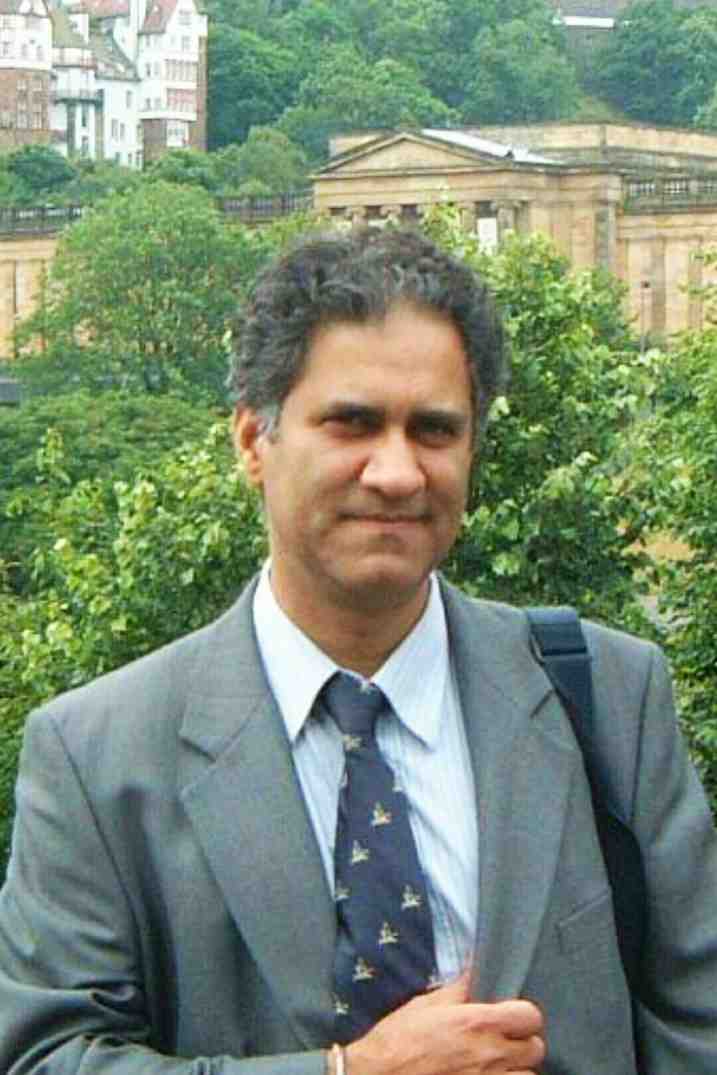AUCTORES
Globalize your Research
Research Article | DOI: https://doi.org/10.31579/ccrt.2025/001
1Department of Neurology, Beijing Tiantan Hospital, Capital Medical University, Beijing, China.
2China National Clinical Research Center for Neurological Diseases, Beijing, China, Beijing, China.
3Department of Neurology, The Affiliated Hospital of Qingdao University, Shandong Province, China.
4Department of Neurology, Dongzhimen Hospital, Beijing University of Chinese Medicine, Beijing, 100700, China.
5Institute for Brain Disorders, Beijing University of Chinese Medicine, Beijing, 100700, China.
# Wenjuan Wang and Jiaokun Jia have contributed equally to the work.
*Corresponding Author: Xingquan Zhao, MD, Department of Neurology, Beijing Tiantan Hospital, Capital Medical University, No.119 South 4th Ring West Road, Fengtai District, Beijing, 100070, China, and Yi Ju, MD, PhD, Department of Neurology, Beijing Tiantan Hospital, Capital Med
Citation: Wenjuan Wang, Jiaokun Jia, Yingjie Zhang, Anxin Wang, Anmu Xie, et al, (2025), Rationale and design of Naoxueshu Oral Liquid in patients with Spontaneous Intracerebral Hemorrhage: Study Protocol, Chinese Clinical Research and Trials, 1(1); DOI:10.31579/ccrt.2025/001
Copyright: © 2025, Xingquan Zhao and Yi Ju. This is an open-access article distributed under the terms of the Creative Commons Attribution License, which permits unrestricted use, distribution, and reproduction in any medium, provided the original author and source are credited.
Received: 05 April 2025 | Accepted: 02 May 2025 | Published: 09 May 2025
Keywords: intracerebral hemorrhage; traditional chinese medicine; nao-xue-shu; hematoma; mri
Background/Aim: Naoxueshu oral liquid (NXSOL) shows promise as a treatment for intracerebral hemorrhage (ICH), but its effectiveness lacks confirmation from large-scale randomized controlled trials. Our study aims to assess the efficacy and safety of NXSOL in non-surgical spontaneous ICH patients.
Materials and Methods: NXSOL in patients with spontaneous ICH (ENSTAR) is a multicenter, prospective, randomized, double-blind, placebo-controlled clinical trial. Adult supratentorial intracerebral hemorrhage (SICH) patients whose hematoma volume ≤40ml, baseline National Institutes of Health Stroke Scale (NIHSS) ≥6 and ≤25, and Glasgow coma scale (GCS) ≥9 within 72 hours after symptom onset are included. Patients who are scheduled for or have already undergone surgery treatment are excluded. Participants are randomly assigned, in a 1:1 ratio, to receive either NXSOL or placebo 10ml 3 times a day for 30 consecutive days. Both NXSOL and control groups will get standard western medical treatment. All will be followed up for 90 days. Primary efficacy outcome is the proportion of mRS ≤2 at 90 days. Secondary efficacy outcomes include mortality within 90 days, changes in brain edema volume on computed tomography (CT) and NIHSS change at 7 and 14 days, cognitive function assessment and economic evaluation of drugs at 90 days. Safety outcomes are rate of hematoma expansion at 7 and 14 days, severe or moderate bleeding at 90 days.
Discussion: ENSTAR will provide evidence for the efficacy and safety of NXSOL in patients with SICH.
Trial registration: This trial has been registered at the Chinese Clinical Trial Registry
(https://www.chictr.org.cn/searchprojEN.html). The trial registration number is ChiCTR2300074347.
| 1 | NXSOL | Naoxueshu oral liquid |
| 2 | ICH | intracerebral hemorrhage |
| 3 | SICH | supratentorial intracerebral hemorrhage |
| 4 | NIHSS | National Institutes of Health Stroke Scale |
| 5 | GCS | Glasgow coma scale |
| 6 | CT | computed tomography |
| 7 | TCM | traditional Chinese medicine |
| 8 | NCCT | non-contrast computed tomography |
| 9 | EQ-5D-5L | European five-dimensional health scale |
| 10 | TICS-M | Telephone Interview for Cognitive Status-Modified |
| 11 | MMSE | Minimum Mental State Examination |
| 12 | MoCA | Montreal Cognitive Assessment |
| 13 | STROKE-PRO | Patient-reported Clinical Outcome Scale for Stroke |
| 14 | AEs | adverse events |
| 15 | SAE | serious AEs |
| 16 | EAC | Endpoint Adjudication Committee |
| 17 | GUSTO | The Global Utilisation of Streptokinase and Tissue Plasminogen Activator for Occluded Coronary Arteries |
| 18 | DSMBs | data and safety monitoring boards |
| 19 | ITT | intention-to-treat |
| 20 | LOCF | last observation carry forward |
| 21 | NMPA | National Medical Products Administration |
| 22 | RCT | randomized controlled trial |
| 23 | WBC | white blood cell |
Intracerebral hemorrhage (ICH) is a severe cerebrovascular disease with high disability and mortality rates. About 14.9% of acute stroke hospitalizations are ICH with in-hospital death/discharge against medical advice rate of 19.5% which is higher than that of 5.8% for ischemic stroke.[1] The mortality of ICH in 3 months is 20∼30% and 46% of patients experiencing death or severe disability within a year.[2] The brain injury after ICH primarily comprises the primary injury as well as the secondary injury. The primary injury is induced by the direct pressure effects of an acutely expanding mass lesion and hematoma growth. The secondary injury is induced by the physiological and cellular pathways triggered by the hematoma and its metabolized blood products, including cerebral edema, inflammation, and biochemical toxicity of blood products such as hemoglobin, iron, and thrombin.[3,4] 2022 Guideline for the Management of Spontaneous ICH provides us with standardized western medical treatment protocols.[5] According to the guideline the blood pressure lowering and reversal of anticoagulation are the major medical therapies for SICH aimed at limiting hematoma enlargement. But the search for effective medical treatments for protecting tissue from secondary post-ICH injury has to date been unsuccessful. In traditional Chinese medicine (TCM) theory, ICH belongs to the category of "stroke". The main pathogenesis was qi stagnation and blood stasis: “All bleeding must leave the meridian, and the blood from the meridian is blood stasis, which always needs removing.” The blood of the meridian will block the brain, leading to the original spirit becoming trapped and blinded. Blood flow is not smooth. Qi deficiency and fluid deficiency lead to blockage of meridian vessels and paralysis of limbs. Naoxueshu oral liquid (NXSOL) is the first Chinese patent medicine for the treatment of ICH. NXSOL has the effects of tonifying qi, promoting blood circulation and removing blood stasis and is mainly used for hemorrhagic stroke in patients with Qi deficiency and blood stasis. NXSOL consists of Astragalus membranaceus (Fisch.), Hirudo nipponica Whitman (Hirudinidae), Bunge. (Leguminosae), Acorus tatarinowii Schott (Acoraceae), Paeonia suffruticosa Andr. (Paeoniaceae), Rheum palmatum L. (Paeoniaceae) and Ligusticum chuanxiong Hort (Apiaceae). [6] Astragalus membranaceus and Hirudo nipponica Whitman are the main components of NXSOL. Studies found that Astragalus membranaceus contains multiple active ingredients, such as astragalosides, which have antioxidant, anti-inflammatory, and antiapoptotic effects.[7,8] They have the ability to protect the blood-brain barrier permeability and prevent cerebral ischemia.[6] Hirudo nipponica Whitman contains the anticoagulant components, including heparin and hirudin, which exhibits anticoagulation effects, inhibits platelet aggregation, and improves blood flow, relieving acute brain injury and ameliorate outcomes of ICH.[9-11] Multiple clinical researches showed that NXSOL can effectively reduce cerebral hemorrhage, cerebral edema safely and improve the ICH patient’s quality of life.[12-15] Whereas most of these studies were limited by small sample size, or single-center design, or no placebo-controlled group to compare the single therapeutic response with NXSOL. Therefore, it is still of great importance to verify the therapeutic value of the multitargeted NXSOL in well-designed large-scale randomized clinical trials. Therefore, we conducted the ENSTAR trial and aimed to evaluate the efficacy, safety, medication adherence, and pharmacoeconomic evaluation of NXSOL in patients with SICH to establish evidence-based medicine.
Design
ENSTAR is a multicenter, prospective, randomized, double-blind, placebo-controlled clinical trial. Enrolled patients will be randomly assigned in a 1:1 ratio by means of a centrally stratified block randomization method to receive NXSOL plus standard western medical treatment or placebo plus standard western medical treatment. Participants are required to be followed up for 90 days to assess the efficacy and safety outcomes. Approximately 30 study centers in China are planned to participate in ENSTAR.
Patient population
Adult supratentorial SICH patients (hematoma volume ≤40ml, baseline National Institutes of Health Stroke Scale [NIHSS] ≥6 and ≤25, and Glasgow coma scale [GCS] ≥9) within 72 hours of symptom onset who meet the diagnostic criteria for SICH are consecutively enrolled into this trial. Patients who are scheduled for or have already undergone surgery treatment are excluded. The detailed inclusion and exclusion criteria are shown in Table 1.

Table 1: Detailed inclusion and exclusion criteria. ICH, intracerebral hemorrhage.
Baseline assessment
Demographic information, medical history, current medications and laboratory tests will be collected. Baseline stroke severity (NIHSS and GCS) will also be assessed by certified and well-trained clinicians. Baseline non-contrast computed tomography (NCCT) scans will be performed on admission. ICH hematoma volume was measured using the ABC/2 method, in which A is the greatest diameter on the largest hemorrhage slice, B is the diameter perpendicular to A, and C is the approximate number of axial slices with hemorrhage multiplied by the slice thickness.[16]
Randomization
Participants are randomly assigned, in a 1:1 ratio, to receive NXSOL or placebo. Study drugs will be packaged on the randomization sequence. The randomization sequence will be generated centrally by SAS with centrally stratified block randomization. The study drugs will be distributed to the sub-centers in groups of four. At the first visit, participants will get the drug numbers in descending order according to the order of enrollment time.
Treatment intervention
Intervention group patients receive NXSOL and control group patients receive placebo 10ml 3 times a day for 30 consecutive days. If the patient has dysphagia, the medicine or placebo can be administered through the indwelling nasogastric tube. The first dose should be given within 2 hours after randomization, and within 72 hours after symptom onset. Standard early treatment and secondary prevention management for all the enrolled patients are based on 2022 Guideline for the management of patients with spontaneous intracerebral hemorrhage: a guideline from the American Heart Association/American Stroke Association and the Chinese guidelines for diagnosis and treatment of acute intracerebral hemorrhage 2019. [5,17]
Patients for whom direct surgical treatment is planned are excluded from this study at initial assessment. Patients who are subsequently judged to require surgical treatment after NXSOL or placebo treatment in the judgement of the investigator will be included in the intention-to-treat analysis, but will be excluded from per-protocol analysis in order to avoid the effect on the outcome.
Concomitant management
All the enrolled patients are requested to be admitted into stroke units or intensive care units if necessary. Participants will be prohibited to receive acupuncture and any other kinds of TCMs (including herbal decoctions, granules, injections and patent medicines) for the treatment of ICH during the experimental drug administration period. Using western medicines, such as diuretics, antihypertensives, antidiabetic drugs, lipid-lowering agents, and additional medications needed based on the patient's condition, will be recorded in detail in the case report form [5].
Follow-up
Study visits will be performed at the screening period (within 72 hours after onset), day 7, day 14 or before discharge (whichever occurs first among these two will be judged as the follow-up point), day 30 and day 90 (endpoint) following symptom onset. (figure 1).

Figure 1: Study flow chart. NXSOL, Naoxueshu oral liquid; SICH, spontaneous intracerebral hemorrhage; NIHSS, National Institute of Health Stroke Scale; GCS, Glasgow Coma Scale.
At the screening period, CT should be performed. The follow-up CT should be completed at day 7, day 14 or before discharge (whichever occurs first) to get the hematoma volume and edema volume. The patients will be given the remaining NXSOL/placebo at discharge and return their pill box and the rest of the pills to the investigator at 30 days when face-to-face follow-up. At baseline and during follow-up visits, clinical information (not limited to that) including the neurological examination (NIHSS, GCS and Modified Rankin Scale [mRS] score), vital signs, laboratory tests with recorded results, concomitant medications, European five-dimensional health scale (EQ-5D-5L), Telephone Interview for Cognitive Status-Modified (TICS-M), Minimum Mental State Examination (MMSE), Montreal Cognitive Assessment (MoCA), Patient-reported Clinical Outcome Scale for Stroke (STROKE-PRO), adverse events (AEs) and serious AEs (SAE) will be collected.(Table 2) If SAEs occur, investigators should adhere to the protocol and Good Clinical Practice guidelines. The Endpoint Adjudication Committee (EAC) will adjudicate the report. The AEs and SAEs will be reported using standard tabulated terminology.

Table 2: Trial assessment flow chart. CT, computed tomography; NIHSS, National Institute of Health Stroke Scale; GCS, Glasgow Coma Scale; ECG, Electrocardiogram; MMSE, Minimum Mental State Examination; MoCA, Montreal Cognitive Assessment; STROKE-PRO, Patient-reported Clinical Outcome Scale for Stroke; mRS, Modified Rankin Scale; TICS-M, Telephone Interview for Cognitive Status-Modified; EQ-5D-5L, five-level EuroQol five-dimensional questionnaire; AE, adverse event; SAE, serious adverse event. *Vital signs include blood pressure and heart rate; **Blood lipid test include total cholesterol, low-density lipoprotein, high-density lipoprotein and triglycerides; ***Visit information will be collected at 14±3 days or discharge (whichever occurs first). The patients will be given the remaining NaoXueShu oral liquid/placebo at discharge; ****Patients will return their pill box and the rest of the pills to the investigator at 30±3 days when face-to-face follow-up.
Study outcomes
Primary Outcome
Proportion of patients with favorable functional outcome defined as an mRS ≤2 at 90 days.
Secondary outcomes
Efficacy outcomes
Safety Outcomes
Steering committee
Steering committee will give scientific and strategic instruction on this study, and be responsible for the design, execution and publishing of the study, and will make sure of the study quality, conduction and management.
Data and safety monitoring boards
An independent data and safety monitoring boards (DSMBs) will monitor the study progress, to make sure it meets the highest standards of ethics and safety. It composes of academic members, including independent statistician who will be responsible for generating the unblinded interim analyses and have no other involvement in the trial. DSMB will give advice on safety data, terminating the study, continuing the study or revising the protocol before continuing.
Sample size estimates
According to the data from previous studies, the proportions of mRS ≤2 at 90 days were ranged from 44% to 83.8%.[19-21] So the proportion of mRS ≤2 in control group at 90 days was set at 64%. It was assumed that the proportion of mRS ≤2 in the NXSOL treatment group will be increased by 12%, that is, the proportion of mRS ≤2 in the NXSOL group at 90 days was 76%. The significance level was set to 5% and power level to 80%. The allocation ratio of NXSOL treatment group and control group was 1:1. The sample size for each group was estimated to be 226. Considering a dropout rate of 15%, a total of 520 patients was needed in this study, with 260 patients in each group.
Baseline indicators will be compared between groups using t-tests or Wilcoxon rank-sum tests for continuous data and chi-square tests, Fisher’s exact tests or Wilcoxon rank-sum tests for categorical data. The primary efficacy evaluation will be based on an intention-to-treat (ITT) analysis and the missing values can be imputed by last observation carry forward (LOCF). Differences between study groups in the proportion of 90-day mRS will be assessed with the use of logistic regression models. The OR and the 95% CI will be reported. In addition, whether the treatment effects differ in certain predefined subgroups will be assessed by testing the interaction between the treatment and the subgroup with the use of logistic regression models. Subgroup analysis includes age (<65>
ENSTAR is a well-designed multicenter, prospective, double-blind, placebo-controlled clinical trial of NXSOL in SICH patients. This will allow us to exclusively answer the question of efficacy and safety of NXSOL combined with standard western medical treatment compared with standard western medical treatment alone in patients with SICH at initial assessment. Due to the complex pathophysiological process of secondary brain injury following ICH, current clinical trials of western medications for ICH have not yielded satisfactory treatment outcomes. [22-24] NXSOL is a new variety of TCM approved by the National Medical Products Administration (NMPA) for the treatment of acute stage and early recovery stages of ICH (Drug approval number: Z20070059). NXSOL promotes Qi, activates blood, and removes blood stasis, thereby promoting hematoma absorption, reducing brain edema, modulating inflammatory factor to improve the microenvironment, and reducing free radicals. Research has validated the therapeutic efficacy of NXSOL in treating ICH, though its mechanisms of action remain under exploration. Animal studies indicate that NXSOL effectively enhances the expression of the ZO-1 protein and suppresses AQP4 protein expression in rats with ICH. This action reduces blood-brain barrier permeability, alleviates brain edema, and protects brain tissue post-hemorrhage.[25] A recent study showed that NXSOL can accelerate the clearance and decomposition of hemoglobin in hematoma by interfering with the activation of M2 microglia via regulating the Nrf2/CD163/HO-1 after ICH.[26] NXSOL was a potential drug by suppressing the inflammatory response and may provide a novel therapeutic strategy against hematoma after ICH. A multicenter observational study has preliminarily shown that NXSOL combined with standard western medicine treatment could relieve hematoma volume and cerebral edema safely and improve patients’ neurological function.[13] A randomized controlled trial (RCT) of 88 ICH patients has shown that, compared with control group, the white blood cell (WBC) count, hematoma volume, NIHSS score, mRS and traditional Chinese medicine syndrome score were significantly decreased in NXSOL group.[12] Additionally, NXSOL has demonstrated efficacy in minimally invasive hematoma evacuation surgery. A study has shown that NXSOL could relieve hematoma volume and cerebral edema after clot removal surgery and had the potential to improve patients’ short-term neurological function.[14] The results of a systematic review and meta-analysis of 14 eligible randomized controlled trials showed that the use of NXSOL alone or combined with other drugs or auxiliary methods had obvious function of arousal, improved nerve function after 4 weeks of treatment and improved the patient’s quality of life.[8] A network meta-analysis showed that NXSOL combined with western medicines was effective for improving neurological function, reducing both hematoma and edema volumes and proinflammatory factor expression in patients with hypertensive ICH.[27] However, high heterogeneity was found in some of their results, the reasons might be related to the number of samples, the quality of the literature, the subject of study, and the duration of treatment. More large-sample and high-quality RCTs are still needed. As we are all aware, there are multiple factors that influence the prognosis of ICH. Considering that the effectiveness of NXSOL may be impacted by varying severity levels of patient's condition, this study specifically selected patients with moderate ICH. Factors influencing the prognosis include hematoma volume, hematoma location, GCS score, age, and others.[28] Among these factors, infratentorial hemorrhage is recognized as an independent predictor for ICH prognosis. For this study, patients with supratentorial hemorrhage are chosen to ensure consistency in clinical characteristics among participants. Based on ICH-GS score criteria, patients with a hematoma volume less than or equal to 40ml and a GCS score greater than or equal to 9 were included.[28] Additionally, a NIHSS range of 6 to 25 was utilized to identify patients with significant neurological deficits. Following recommendations from 2022 Guideline for the Management of SICH, for patients with supratentorial ICH of >20- to 30-mL volume with GCS scores in the moderate range (5–12), minimally invasive hematoma evacuation with endoscopic or stereotactic aspiration can be useful to reduce mortality compared with medical management alone, so individuals who had undergone surgery or were scheduled for surgery were also excluded from this study.[5] Furthermore, patients aged 80 years or older were not included in order to explore the most likely population benefiting from NXSOL administration. It should be noted that additional studies need to be designed in order to further confirm the efficacy and safety of NXSOL in patients with severe ICH as well as surgical and elderly patients. Another trial is ongoing in the world to provide more evidence on NXSOL in treatment of ICH which is an observational clinical registration study (Registration Study for the Prevention and Treatment of Cerebral Hemorrhage using Naoxueshu Oral Liquid, ChiCTR2300074892).[29] Compared with this trial, ENSTAR is a multicenter, prospective, randomized, double-blind, placebo-controlled clinical trial in supratentorial hemorrhage but without intention to surgery at initial assessment. However, insufficient sample size may be a limitation of this study. In conclusion, ENSTAR is initiated to investigate the efficacy and safety of NXSOL in patients with SICH. It will help provide strong evidence for potential advantages of NXSOL use in SICH patients.
This study is supported by the National Key R&D Program of China (2022YFC3501100, 2022YFC3501102). This study was funded by the Shandong Wohua Pharmaceutical Technology Co., Ltd with the investigation drugs provided for free.
Ethics approval and consent to participate
This study involves human participants and all procedures performed in studies involving human participants were in accordance with the ethical standards of the institutional research committee and the principles of the Declaration of Helsinki. This study obtained Ethics approval from the Institutional Review Board of Beijing Tiantan Hospital, Capital Medical University with number KY2023-077-02. Participants gave informed consent to participate in the study before taking part.
The authors declare that they consent for publication.
This is an open access article distributed in accordance with the Creative Commons Attribution Non Commercial (CC BY-NC 4.0) license, which permits others to distribute, remix, adapt, build upon this work non-commercially, and license their derivative works on different terms, provided the original work is properly cited, appropriate credit is given, any changes made indicated, and the use is non-commercial. See: http://creativecommons.org/licenses/by-nc/4.0/
The author(s) declared no potential conflicts of interest with respect to the research, authorship, and/or publication of this article.
YJ and XZ obtained funding, concept and design the trial. YJ, XZ, WW, JJ, AX and YG contributed to the study design. WW and JJ drafted the manuscript. YJ, WW, JJ, YZ, MX, XL and YG assisted to promote the project progress. AX and WW completed the statistical work. All authors approved the submitted version.
YX, HL and YP. All authors approved the submitted version.
Clearly Auctoresonline and particularly Psychology and Mental Health Care Journal is dedicated to improving health care services for individuals and populations. The editorial boards' ability to efficiently recognize and share the global importance of health literacy with a variety of stakeholders. Auctoresonline publishing platform can be used to facilitate of optimal client-based services and should be added to health care professionals' repertoire of evidence-based health care resources.

Journal of Clinical Cardiology and Cardiovascular Intervention The submission and review process was adequate. However I think that the publication total value should have been enlightened in early fases. Thank you for all.

Journal of Women Health Care and Issues By the present mail, I want to say thank to you and tour colleagues for facilitating my published article. Specially thank you for the peer review process, support from the editorial office. I appreciate positively the quality of your journal.
Journal of Clinical Research and Reports I would be very delighted to submit my testimonial regarding the reviewer board and the editorial office. The reviewer board were accurate and helpful regarding any modifications for my manuscript. And the editorial office were very helpful and supportive in contacting and monitoring with any update and offering help. It was my pleasure to contribute with your promising Journal and I am looking forward for more collaboration.

We would like to thank the Journal of Thoracic Disease and Cardiothoracic Surgery because of the services they provided us for our articles. The peer-review process was done in a very excellent time manner, and the opinions of the reviewers helped us to improve our manuscript further. The editorial office had an outstanding correspondence with us and guided us in many ways. During a hard time of the pandemic that is affecting every one of us tremendously, the editorial office helped us make everything easier for publishing scientific work. Hope for a more scientific relationship with your Journal.

The peer-review process which consisted high quality queries on the paper. I did answer six reviewers’ questions and comments before the paper was accepted. The support from the editorial office is excellent.

Journal of Neuroscience and Neurological Surgery. I had the experience of publishing a research article recently. The whole process was simple from submission to publication. The reviewers made specific and valuable recommendations and corrections that improved the quality of my publication. I strongly recommend this Journal.

Dr. Katarzyna Byczkowska My testimonial covering: "The peer review process is quick and effective. The support from the editorial office is very professional and friendly. Quality of the Clinical Cardiology and Cardiovascular Interventions is scientific and publishes ground-breaking research on cardiology that is useful for other professionals in the field.

Thank you most sincerely, with regard to the support you have given in relation to the reviewing process and the processing of my article entitled "Large Cell Neuroendocrine Carcinoma of The Prostate Gland: A Review and Update" for publication in your esteemed Journal, Journal of Cancer Research and Cellular Therapeutics". The editorial team has been very supportive.

Testimony of Journal of Clinical Otorhinolaryngology: work with your Reviews has been a educational and constructive experience. The editorial office were very helpful and supportive. It was a pleasure to contribute to your Journal.

Dr. Bernard Terkimbi Utoo, I am happy to publish my scientific work in Journal of Women Health Care and Issues (JWHCI). The manuscript submission was seamless and peer review process was top notch. I was amazed that 4 reviewers worked on the manuscript which made it a highly technical, standard and excellent quality paper. I appreciate the format and consideration for the APC as well as the speed of publication. It is my pleasure to continue with this scientific relationship with the esteem JWHCI.

This is an acknowledgment for peer reviewers, editorial board of Journal of Clinical Research and Reports. They show a lot of consideration for us as publishers for our research article “Evaluation of the different factors associated with side effects of COVID-19 vaccination on medical students, Mutah university, Al-Karak, Jordan”, in a very professional and easy way. This journal is one of outstanding medical journal.
Dear Hao Jiang, to Journal of Nutrition and Food Processing We greatly appreciate the efficient, professional and rapid processing of our paper by your team. If there is anything else we should do, please do not hesitate to let us know. On behalf of my co-authors, we would like to express our great appreciation to editor and reviewers.

As an author who has recently published in the journal "Brain and Neurological Disorders". I am delighted to provide a testimonial on the peer review process, editorial office support, and the overall quality of the journal. The peer review process at Brain and Neurological Disorders is rigorous and meticulous, ensuring that only high-quality, evidence-based research is published. The reviewers are experts in their fields, and their comments and suggestions were constructive and helped improve the quality of my manuscript. The review process was timely and efficient, with clear communication from the editorial office at each stage. The support from the editorial office was exceptional throughout the entire process. The editorial staff was responsive, professional, and always willing to help. They provided valuable guidance on formatting, structure, and ethical considerations, making the submission process seamless. Moreover, they kept me informed about the status of my manuscript and provided timely updates, which made the process less stressful. The journal Brain and Neurological Disorders is of the highest quality, with a strong focus on publishing cutting-edge research in the field of neurology. The articles published in this journal are well-researched, rigorously peer-reviewed, and written by experts in the field. The journal maintains high standards, ensuring that readers are provided with the most up-to-date and reliable information on brain and neurological disorders. In conclusion, I had a wonderful experience publishing in Brain and Neurological Disorders. The peer review process was thorough, the editorial office provided exceptional support, and the journal's quality is second to none. I would highly recommend this journal to any researcher working in the field of neurology and brain disorders.

Dear Agrippa Hilda, Journal of Neuroscience and Neurological Surgery, Editorial Coordinator, I trust this message finds you well. I want to extend my appreciation for considering my article for publication in your esteemed journal. I am pleased to provide a testimonial regarding the peer review process and the support received from your editorial office. The peer review process for my paper was carried out in a highly professional and thorough manner. The feedback and comments provided by the authors were constructive and very useful in improving the quality of the manuscript. This rigorous assessment process undoubtedly contributes to the high standards maintained by your journal.

International Journal of Clinical Case Reports and Reviews. I strongly recommend to consider submitting your work to this high-quality journal. The support and availability of the Editorial staff is outstanding and the review process was both efficient and rigorous.

Thank you very much for publishing my Research Article titled “Comparing Treatment Outcome Of Allergic Rhinitis Patients After Using Fluticasone Nasal Spray And Nasal Douching" in the Journal of Clinical Otorhinolaryngology. As Medical Professionals we are immensely benefited from study of various informative Articles and Papers published in this high quality Journal. I look forward to enriching my knowledge by regular study of the Journal and contribute my future work in the field of ENT through the Journal for use by the medical fraternity. The support from the Editorial office was excellent and very prompt. I also welcome the comments received from the readers of my Research Article.

Dear Erica Kelsey, Editorial Coordinator of Cancer Research and Cellular Therapeutics Our team is very satisfied with the processing of our paper by your journal. That was fast, efficient, rigorous, but without unnecessary complications. We appreciated the very short time between the submission of the paper and its publication on line on your site.

I am very glad to say that the peer review process is very successful and fast and support from the Editorial Office. Therefore, I would like to continue our scientific relationship for a long time. And I especially thank you for your kindly attention towards my article. Have a good day!

"We recently published an article entitled “Influence of beta-Cyclodextrins upon the Degradation of Carbofuran Derivatives under Alkaline Conditions" in the Journal of “Pesticides and Biofertilizers” to show that the cyclodextrins protect the carbamates increasing their half-life time in the presence of basic conditions This will be very helpful to understand carbofuran behaviour in the analytical, agro-environmental and food areas. We greatly appreciated the interaction with the editor and the editorial team; we were particularly well accompanied during the course of the revision process, since all various steps towards publication were short and without delay".

I would like to express my gratitude towards you process of article review and submission. I found this to be very fair and expedient. Your follow up has been excellent. I have many publications in national and international journal and your process has been one of the best so far. Keep up the great work.

We are grateful for this opportunity to provide a glowing recommendation to the Journal of Psychiatry and Psychotherapy. We found that the editorial team were very supportive, helpful, kept us abreast of timelines and over all very professional in nature. The peer review process was rigorous, efficient and constructive that really enhanced our article submission. The experience with this journal remains one of our best ever and we look forward to providing future submissions in the near future.

I am very pleased to serve as EBM of the journal, I hope many years of my experience in stem cells can help the journal from one way or another. As we know, stem cells hold great potential for regenerative medicine, which are mostly used to promote the repair response of diseased, dysfunctional or injured tissue using stem cells or their derivatives. I think Stem Cell Research and Therapeutics International is a great platform to publish and share the understanding towards the biology and translational or clinical application of stem cells.

I would like to give my testimony in the support I have got by the peer review process and to support the editorial office where they were of asset to support young author like me to be encouraged to publish their work in your respected journal and globalize and share knowledge across the globe. I really give my great gratitude to your journal and the peer review including the editorial office.

I am delighted to publish our manuscript entitled "A Perspective on Cocaine Induced Stroke - Its Mechanisms and Management" in the Journal of Neuroscience and Neurological Surgery. The peer review process, support from the editorial office, and quality of the journal are excellent. The manuscripts published are of high quality and of excellent scientific value. I recommend this journal very much to colleagues.

Dr.Tania Muñoz, My experience as researcher and author of a review article in The Journal Clinical Cardiology and Interventions has been very enriching and stimulating. The editorial team is excellent, performs its work with absolute responsibility and delivery. They are proactive, dynamic and receptive to all proposals. Supporting at all times the vast universe of authors who choose them as an option for publication. The team of review specialists, members of the editorial board, are brilliant professionals, with remarkable performance in medical research and scientific methodology. Together they form a frontline team that consolidates the JCCI as a magnificent option for the publication and review of high-level medical articles and broad collective interest. I am honored to be able to share my review article and open to receive all your comments.

“The peer review process of JPMHC is quick and effective. Authors are benefited by good and professional reviewers with huge experience in the field of psychology and mental health. The support from the editorial office is very professional. People to contact to are friendly and happy to help and assist any query authors might have. Quality of the Journal is scientific and publishes ground-breaking research on mental health that is useful for other professionals in the field”.

Dear editorial department: On behalf of our team, I hereby certify the reliability and superiority of the International Journal of Clinical Case Reports and Reviews in the peer review process, editorial support, and journal quality. Firstly, the peer review process of the International Journal of Clinical Case Reports and Reviews is rigorous, fair, transparent, fast, and of high quality. The editorial department invites experts from relevant fields as anonymous reviewers to review all submitted manuscripts. These experts have rich academic backgrounds and experience, and can accurately evaluate the academic quality, originality, and suitability of manuscripts. The editorial department is committed to ensuring the rigor of the peer review process, while also making every effort to ensure a fast review cycle to meet the needs of authors and the academic community. Secondly, the editorial team of the International Journal of Clinical Case Reports and Reviews is composed of a group of senior scholars and professionals with rich experience and professional knowledge in related fields. The editorial department is committed to assisting authors in improving their manuscripts, ensuring their academic accuracy, clarity, and completeness. Editors actively collaborate with authors, providing useful suggestions and feedback to promote the improvement and development of the manuscript. We believe that the support of the editorial department is one of the key factors in ensuring the quality of the journal. Finally, the International Journal of Clinical Case Reports and Reviews is renowned for its high- quality articles and strict academic standards. The editorial department is committed to publishing innovative and academically valuable research results to promote the development and progress of related fields. The International Journal of Clinical Case Reports and Reviews is reasonably priced and ensures excellent service and quality ratio, allowing authors to obtain high-level academic publishing opportunities in an affordable manner. I hereby solemnly declare that the International Journal of Clinical Case Reports and Reviews has a high level of credibility and superiority in terms of peer review process, editorial support, reasonable fees, and journal quality. Sincerely, Rui Tao.

Clinical Cardiology and Cardiovascular Interventions I testity the covering of the peer review process, support from the editorial office, and quality of the journal.

Clinical Cardiology and Cardiovascular Interventions, we deeply appreciate the interest shown in our work and its publication. It has been a true pleasure to collaborate with you. The peer review process, as well as the support provided by the editorial office, have been exceptional, and the quality of the journal is very high, which was a determining factor in our decision to publish with you.
The peer reviewers process is quick and effective, the supports from editorial office is excellent, the quality of journal is high. I would like to collabroate with Internatioanl journal of Clinical Case Reports and Reviews journal clinically in the future time.

Clinical Cardiology and Cardiovascular Interventions, I would like to express my sincerest gratitude for the trust placed in our team for the publication in your journal. It has been a true pleasure to collaborate with you on this project. I am pleased to inform you that both the peer review process and the attention from the editorial coordination have been excellent. Your team has worked with dedication and professionalism to ensure that your publication meets the highest standards of quality. We are confident that this collaboration will result in mutual success, and we are eager to see the fruits of this shared effort.

Dear Dr. Jessica Magne, Editorial Coordinator 0f Clinical Cardiology and Cardiovascular Interventions, I hope this message finds you well. I want to express my utmost gratitude for your excellent work and for the dedication and speed in the publication process of my article titled "Navigating Innovation: Qualitative Insights on Using Technology for Health Education in Acute Coronary Syndrome Patients." I am very satisfied with the peer review process, the support from the editorial office, and the quality of the journal. I hope we can maintain our scientific relationship in the long term.
Dear Monica Gissare, - Editorial Coordinator of Nutrition and Food Processing. ¨My testimony with you is truly professional, with a positive response regarding the follow-up of the article and its review, you took into account my qualities and the importance of the topic¨.

Dear Dr. Jessica Magne, Editorial Coordinator 0f Clinical Cardiology and Cardiovascular Interventions, The review process for the article “The Handling of Anti-aggregants and Anticoagulants in the Oncologic Heart Patient Submitted to Surgery” was extremely rigorous and detailed. From the initial submission to the final acceptance, the editorial team at the “Journal of Clinical Cardiology and Cardiovascular Interventions” demonstrated a high level of professionalism and dedication. The reviewers provided constructive and detailed feedback, which was essential for improving the quality of our work. Communication was always clear and efficient, ensuring that all our questions were promptly addressed. The quality of the “Journal of Clinical Cardiology and Cardiovascular Interventions” is undeniable. It is a peer-reviewed, open-access publication dedicated exclusively to disseminating high-quality research in the field of clinical cardiology and cardiovascular interventions. The journal's impact factor is currently under evaluation, and it is indexed in reputable databases, which further reinforces its credibility and relevance in the scientific field. I highly recommend this journal to researchers looking for a reputable platform to publish their studies.

Dear Editorial Coordinator of the Journal of Nutrition and Food Processing! "I would like to thank the Journal of Nutrition and Food Processing for including and publishing my article. The peer review process was very quick, movement and precise. The Editorial Board has done an extremely conscientious job with much help, valuable comments and advices. I find the journal very valuable from a professional point of view, thank you very much for allowing me to be part of it and I would like to participate in the future!”

Dealing with The Journal of Neurology and Neurological Surgery was very smooth and comprehensive. The office staff took time to address my needs and the response from editors and the office was prompt and fair. I certainly hope to publish with this journal again.Their professionalism is apparent and more than satisfactory. Susan Weiner

My Testimonial Covering as fellowing: Lin-Show Chin. The peer reviewers process is quick and effective, the supports from editorial office is excellent, the quality of journal is high. I would like to collabroate with Internatioanl journal of Clinical Case Reports and Reviews.

My experience publishing in Psychology and Mental Health Care was exceptional. The peer review process was rigorous and constructive, with reviewers providing valuable insights that helped enhance the quality of our work. The editorial team was highly supportive and responsive, making the submission process smooth and efficient. The journal's commitment to high standards and academic rigor makes it a respected platform for quality research. I am grateful for the opportunity to publish in such a reputable journal.
My experience publishing in International Journal of Clinical Case Reports and Reviews was exceptional. I Come forth to Provide a Testimonial Covering the Peer Review Process and the editorial office for the Professional and Impartial Evaluation of the Manuscript.

I would like to offer my testimony in the support. I have received through the peer review process and support the editorial office where they are to support young authors like me, encourage them to publish their work in your esteemed journals, and globalize and share knowledge globally. I really appreciate your journal, peer review, and editorial office.
Dear Agrippa Hilda- Editorial Coordinator of Journal of Neuroscience and Neurological Surgery, "The peer review process was very quick and of high quality, which can also be seen in the articles in the journal. The collaboration with the editorial office was very good."

I would like to express my sincere gratitude for the support and efficiency provided by the editorial office throughout the publication process of my article, “Delayed Vulvar Metastases from Rectal Carcinoma: A Case Report.” I greatly appreciate the assistance and guidance I received from your team, which made the entire process smooth and efficient. The peer review process was thorough and constructive, contributing to the overall quality of the final article. I am very grateful for the high level of professionalism and commitment shown by the editorial staff, and I look forward to maintaining a long-term collaboration with the International Journal of Clinical Case Reports and Reviews.
To Dear Erin Aust, I would like to express my heartfelt appreciation for the opportunity to have my work published in this esteemed journal. The entire publication process was smooth and well-organized, and I am extremely satisfied with the final result. The Editorial Team demonstrated the utmost professionalism, providing prompt and insightful feedback throughout the review process. Their clear communication and constructive suggestions were invaluable in enhancing my manuscript, and their meticulous attention to detail and dedication to quality are truly commendable. Additionally, the support from the Editorial Office was exceptional. From the initial submission to the final publication, I was guided through every step of the process with great care and professionalism. The team's responsiveness and assistance made the entire experience both easy and stress-free. I am also deeply impressed by the quality and reputation of the journal. It is an honor to have my research featured in such a respected publication, and I am confident that it will make a meaningful contribution to the field.

"I am grateful for the opportunity of contributing to [International Journal of Clinical Case Reports and Reviews] and for the rigorous review process that enhances the quality of research published in your esteemed journal. I sincerely appreciate the time and effort of your team who have dedicatedly helped me in improvising changes and modifying my manuscript. The insightful comments and constructive feedback provided have been invaluable in refining and strengthening my work".

I thank the ‘Journal of Clinical Research and Reports’ for accepting this article for publication. This is a rigorously peer reviewed journal which is on all major global scientific data bases. I note the review process was prompt, thorough and professionally critical. It gave us an insight into a number of important scientific/statistical issues. The review prompted us to review the relevant literature again and look at the limitations of the study. The peer reviewers were open, clear in the instructions and the editorial team was very prompt in their communication. This journal certainly publishes quality research articles. I would recommend the journal for any future publications.

Dear Jessica Magne, with gratitude for the joint work. Fast process of receiving and processing the submitted scientific materials in “Clinical Cardiology and Cardiovascular Interventions”. High level of competence of the editors with clear and correct recommendations and ideas for enriching the article.

We found the peer review process quick and positive in its input. The support from the editorial officer has been very agile, always with the intention of improving the article and taking into account our subsequent corrections.

My article, titled 'No Way Out of the Smartphone Epidemic Without Considering the Insights of Brain Research,' has been republished in the International Journal of Clinical Case Reports and Reviews. The review process was seamless and professional, with the editors being both friendly and supportive. I am deeply grateful for their efforts.
To Dear Erin Aust – Editorial Coordinator of Journal of General Medicine and Clinical Practice! I declare that I am absolutely satisfied with your work carried out with great competence in following the manuscript during the various stages from its receipt, during the revision process to the final acceptance for publication. Thank Prof. Elvira Farina

Dear Jessica, and the super professional team of the ‘Clinical Cardiology and Cardiovascular Interventions’ I am sincerely grateful to the coordinated work of the journal team for the no problem with the submission of my manuscript: “Cardiometabolic Disorders in A Pregnant Woman with Severe Preeclampsia on the Background of Morbid Obesity (Case Report).” The review process by 5 experts was fast, and the comments were professional, which made it more specific and academic, and the process of publication and presentation of the article was excellent. I recommend that my colleagues publish articles in this journal, and I am interested in further scientific cooperation. Sincerely and best wishes, Dr. Oleg Golyanovskiy.

Dear Ashley Rosa, Editorial Coordinator of the journal - Psychology and Mental Health Care. " The process of obtaining publication of my article in the Psychology and Mental Health Journal was positive in all areas. The peer review process resulted in a number of valuable comments, the editorial process was collaborative and timely, and the quality of this journal has been quickly noticed, resulting in alternative journals contacting me to publish with them." Warm regards, Susan Anne Smith, PhD. Australian Breastfeeding Association.

Dear Jessica Magne, Editorial Coordinator, Clinical Cardiology and Cardiovascular Interventions, Auctores Publishing LLC. I appreciate the journal (JCCI) editorial office support, the entire team leads were always ready to help, not only on technical front but also on thorough process. Also, I should thank dear reviewers’ attention to detail and creative approach to teach me and bring new insights by their comments. Surely, more discussions and introduction of other hemodynamic devices would provide better prevention and management of shock states. Your efforts and dedication in presenting educational materials in this journal are commendable. Best wishes from, Farahnaz Fallahian.
Dear Maria Emerson, Editorial Coordinator, International Journal of Clinical Case Reports and Reviews, Auctores Publishing LLC. I am delighted to have published our manuscript, "Acute Colonic Pseudo-Obstruction (ACPO): A rare but serious complication following caesarean section." I want to thank the editorial team, especially Maria Emerson, for their prompt review of the manuscript, quick responses to queries, and overall support. Yours sincerely Dr. Victor Olagundoye.

Dear Ashley Rosa, Editorial Coordinator, International Journal of Clinical Case Reports and Reviews. Many thanks for publishing this manuscript after I lost confidence the editors were most helpful, more than other journals Best wishes from, Susan Anne Smith, PhD. Australian Breastfeeding Association.

Dear Agrippa Hilda, Editorial Coordinator, Journal of Neuroscience and Neurological Surgery. The entire process including article submission, review, revision, and publication was extremely easy. The journal editor was prompt and helpful, and the reviewers contributed to the quality of the paper. Thank you so much! Eric Nussbaum, MD
Dr Hala Al Shaikh This is to acknowledge that the peer review process for the article ’ A Novel Gnrh1 Gene Mutation in Four Omani Male Siblings, Presentation and Management ’ sent to the International Journal of Clinical Case Reports and Reviews was quick and smooth. The editorial office was prompt with easy communication.

Dear Erin Aust, Editorial Coordinator, Journal of General Medicine and Clinical Practice. We are pleased to share our experience with the “Journal of General Medicine and Clinical Practice”, following the successful publication of our article. The peer review process was thorough and constructive, helping to improve the clarity and quality of the manuscript. We are especially thankful to Ms. Erin Aust, the Editorial Coordinator, for her prompt communication and continuous support throughout the process. Her professionalism ensured a smooth and efficient publication experience. The journal upholds high editorial standards, and we highly recommend it to fellow researchers seeking a credible platform for their work. Best wishes By, Dr. Rakhi Mishra.

Dear Jessica Magne, Editorial Coordinator, Clinical Cardiology and Cardiovascular Interventions, Auctores Publishing LLC. The peer review process of the journal of Clinical Cardiology and Cardiovascular Interventions was excellent and fast, as was the support of the editorial office and the quality of the journal. Kind regards Walter F. Riesen Prof. Dr. Dr. h.c. Walter F. Riesen.

Dear Ashley Rosa, Editorial Coordinator, International Journal of Clinical Case Reports and Reviews, Auctores Publishing LLC. Thank you for publishing our article, Exploring Clozapine's Efficacy in Managing Aggression: A Multiple Single-Case Study in Forensic Psychiatry in the international journal of clinical case reports and reviews. We found the peer review process very professional and efficient. The comments were constructive, and the whole process was efficient. On behalf of the co-authors, I would like to thank you for publishing this article. With regards, Dr. Jelle R. Lettinga.

Dear Clarissa Eric, Editorial Coordinator, Journal of Clinical Case Reports and Studies, I would like to express my deep admiration for the exceptional professionalism demonstrated by your journal. I am thoroughly impressed by the speed of the editorial process, the substantive and insightful reviews, and the meticulous preparation of the manuscript for publication. Additionally, I greatly appreciate the courteous and immediate responses from your editorial office to all my inquiries. Best Regards, Dariusz Ziora

Dear Chrystine Mejia, Editorial Coordinator, Journal of Neurodegeneration and Neurorehabilitation, Auctores Publishing LLC, We would like to thank the editorial team for the smooth and high-quality communication leading up to the publication of our article in the Journal of Neurodegeneration and Neurorehabilitation. The reviewers have extensive knowledge in the field, and their relevant questions helped to add value to our publication. Kind regards, Dr. Ravi Shrivastava.

Dear Clarissa Eric, Editorial Coordinator, Journal of Clinical Case Reports and Studies, Auctores Publishing LLC, USA Office: +1-(302)-520-2644. I would like to express my sincere appreciation for the efficient and professional handling of my case report by the ‘Journal of Clinical Case Reports and Studies’. The peer review process was not only fast but also highly constructive—the reviewers’ comments were clear, relevant, and greatly helped me improve the quality and clarity of my manuscript. I also received excellent support from the editorial office throughout the process. Communication was smooth and timely, and I felt well guided at every stage, from submission to publication. The overall quality and rigor of the journal are truly commendable. I am pleased to have published my work with Journal of Clinical Case Reports and Studies, and I look forward to future opportunities for collaboration. Sincerely, Aline Tollet, UCLouvain.

Dear Ms. Mayra Duenas, Editorial Coordinator, International Journal of Clinical Case Reports and Reviews. “The International Journal of Clinical Case Reports and Reviews represented the “ideal house” to share with the research community a first experience with the use of the Simeox device for speech rehabilitation. High scientific reputation and attractive website communication were first determinants for the selection of this Journal, and the following submission process exceeded expectations: fast but highly professional peer review, great support by the editorial office, elegant graphic layout. Exactly what a dynamic research team - also composed by allied professionals - needs!" From, Chiara Beccaluva, PT - Italy.

Dear Maria Emerson, Editorial Coordinator, we have deeply appreciated the professionalism demonstrated by the International Journal of Clinical Case Reports and Reviews. The reviewers have extensive knowledge of our field and have been very efficient and fast in supporting the process. I am really looking forward to further collaboration. Thanks. Best regards, Dr. Claudio Ligresti
Dear Chrystine Mejia, Editorial Coordinator, Journal of Neurodegeneration and Neurorehabilitation. “The peer review process was efficient and constructive, and the editorial office provided excellent communication and support throughout. The journal ensures scientific rigor and high editorial standards, while also offering a smooth and timely publication process. We sincerely appreciate the work of the editorial team in facilitating the dissemination of innovative approaches such as the Bonori Method.” Best regards, Dr. Matteo Bonori.

I recommend without hesitation submitting relevant papers on medical decision making to the International Journal of Clinical Case Reports and Reviews. I am very grateful to the editorial staff. Maria Emerson was a pleasure to communicate with. The time from submission to publication was an extremely short 3 weeks. The editorial staff submitted the paper to three reviewers. Two of the reviewers commented positively on the value of publishing the paper. The editorial staff quickly recognized the third reviewer’s comments as an unjust attempt to reject the paper. I revised the paper as recommended by the first two reviewers.

Dear Maria Emerson, Editorial Coordinator, Journal of Clinical Research and Reports. Thank you for publishing our case report: "Clinical Case of Effective Fetal Stem Cells Treatment in a Patient with Autism Spectrum Disorder" within the "Journal of Clinical Research and Reports" being submitted by the team of EmCell doctors from Kyiv, Ukraine. We much appreciate a professional and transparent peer-review process from Auctores. All research Doctors are so grateful to your Editorial Office and Auctores Publishing support! I amiably wish our article publication maintained a top quality of your International Scientific Journal. My best wishes for a prosperity of the Journal of Clinical Research and Reports. Hope our scientific relationship and cooperation will remain long lasting. Thank you very much indeed. Kind regards, Dr. Andriy Sinelnyk Cell Therapy Center EmCell
